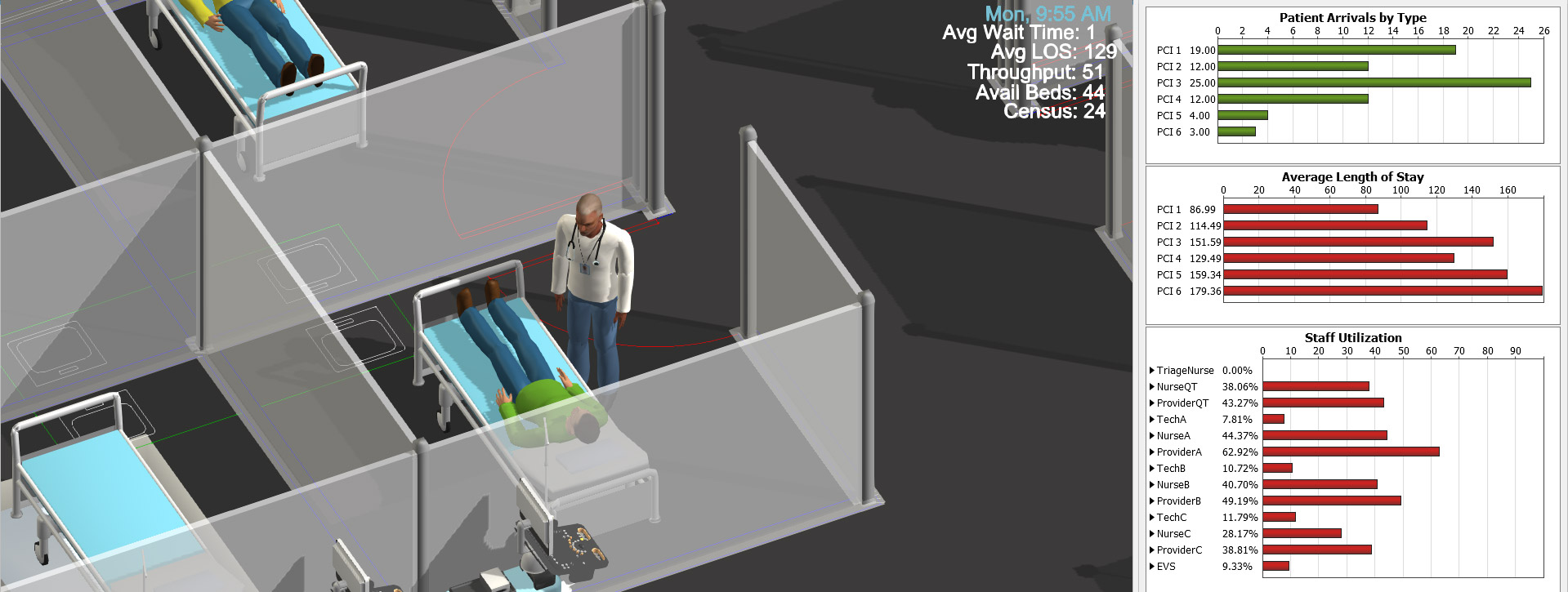In an article in the Birmingham Medical News, Deborah Flint, director of Performance Engineering at the Kirklin Clinic of UAB Hospital, explained the role that simulation plays in improving patient flow at her facility:
“The computer simulation helps evaluate different scenarios we may have identified using Lean Six Sigma. It helps us validate whether a new approach works. It allows us to see the impact before we pilot an idea. If we don’t get good results, we decide not to implement it.”
Solving outpatient problems
Outpatient care is unique in part because facilities are often designed, equipped, and staffed for the specific needs of one or more unique classes of patient. They must provide the care needed to satisfy an enormous spectrum of treatment requirements the body could demand. This includes an array of equipment, material, and treatment modalities. Another notable characteristic of outpatient care is the irregularity of patient arrivals. This means both the variance in appointment arrivals and also the tendency of patients to miss appointments—due to reasons ranging from bad weather to a tough day at work.
For example, many clinics experience periods of high patient arrivals volumes on the hour and half-hour. These are popular times for appointments. But the result can be overwhelming to a small intake team, with long waiting times for the patients. Deborah and her colleagues use computer simulation as a critical tool for developing and testing processes to smooth these arrivals and reduce wait times.
How can simulation help?
“We figure out what might work, and then we run the model in the computer simulation to see if that helps before we implement changes,” Deborah said in the article. “Changing provider schedules is labor intensive. With simulation, we can test ideas and have a higher confidence they will work.”
Many outpatient problems are difficult or impossible to solve using conventional methods.
In our experience, simulation-generated solutions can consider a far wider range of factors on complex patient flow issues. It’s a solution that carefully considers the impact of variability instead of assuming it away, as spreadsheet analysis tends to do. Validation is easier, and it comes on both an analytical level (through calculated performance results and real-time values) and a visual level (through a 3D representation of the system in motion). But perhaps the most overlooked benefit of simulation modeling is how it can bring all stakeholders together to truly see how their contributions can affect patient outcomes.
Would you like to see how it works firsthand?
The Kirklin Clinic of UAB Hospital did a webinar presentation showing just how they use simulation analysis in their Performance Engineering Department. Their team used FlexSim HC and some creative analysis to find the best location to perform intake at an outpatient clinic. You’ll be able to see their thought process, the steps they used, and how the model showed a reduction of 46% in the average check-in time.
